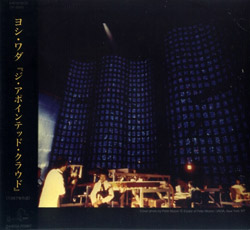
The droning sonority of a church pipe organ, the way it resists being framed as it flutters ever higher in the air, carried musician Yoshi Wada along with it, seducing him into an investigation of its properties and mechanics, from how it is built to matters of its proper tuning and such.
Equally evasive, Wada was adamant not to merely remain in its grip, exposed and vulnerable, conjuring compositions as homage to the instrument. Perhaps owing to his background history with Fluxus, Wada uses the New York Hall of Science, with its eighty-foot ceiling and undulating walls embedded with cobalt blue stained glass, as the scene for his transition from composition to installation.
At its heart, The Appointed Cloud appeals to the spirit of installation as interaction. Visitors don't receive but reciprocate, actively altering the composition by pushing buttons on a separate keypad. Tones are then further changed depending on how the visitor moves through the installation.
This results in a disjunctive experience, an exuberant exhibition that is about, partly, the relative invisibility of its practitioners. As Wada points out in the linear notes, his express desire with the work was to install a sound experience in a place where he didn't himself have to be present while it unfolds. Electronics expert David Rayna, having developed a computer program specifically for this installation, aids Wada in this regard. His program controls the flow of the air to the pipes, to the seismic vibrations of the twenty-foot long metal strip hanging from the ceiling, to a mallet striking the hanging steam pipe gong. In setting off these bizarre shapes and ear-stretching juxtapositions, the functioning of this machine distances the work well from the basic concert experience, opening up other avenues in one's relation to the sound and its expression in and through the environment (as an aside, that such a set-up nearly fulfills a certain metaphysical desire, that of seeing without being present - in brief, assuming a God-like perspective - also piques the curiosity).
All the same, traces remain. Besides Rayna's computer, Michael Pugliesi contributes percussion while Wada himself adds bagpipes to the proceedings. Their presence lends the pieces a rigorously composed aura, with an instinctive sensibility for fluidity and drama. The one sixty-minute composition moves from testy explorations of conflicting themes to sedate soliloquies. Often the players on hand heap on the intension and then cut back to more becalmed sonic vistas, though ones whose surfaces nevertheless contain the seeds of something darker and unsettled, which they then work towards in the next section. Looked at as a whole, the piece sees the group achieve a balance of drift and purpose, sprawl and discipline, noise and non-noise. It is difficult and rough, but quite gorgeously radiant.
Comments and Feedback:
|



